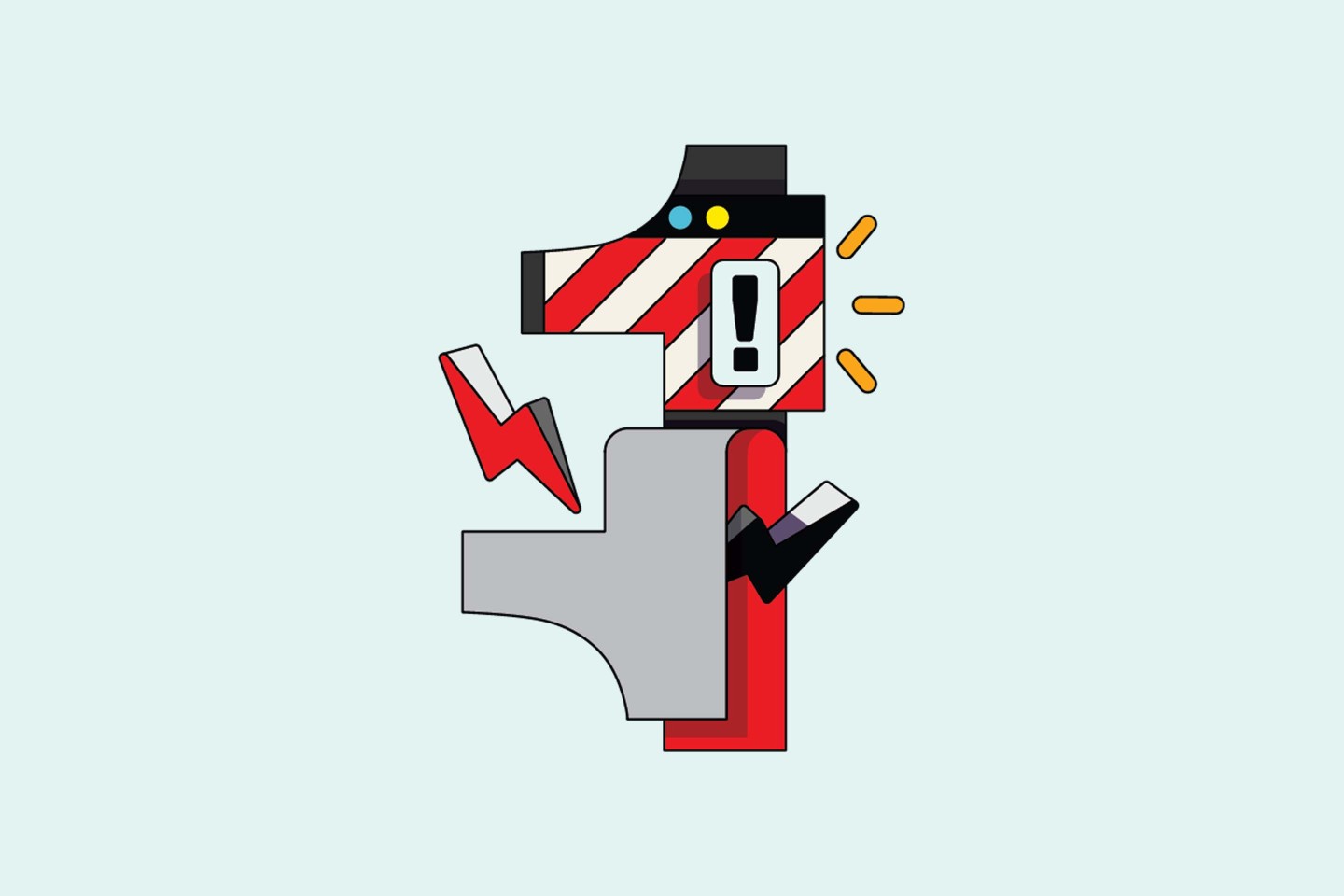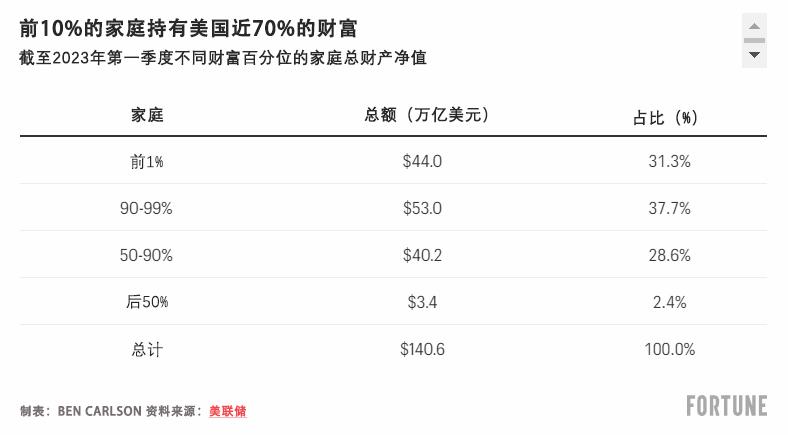向前1%的富人学习投资,三步赚取你的第一个100万美元

1989年,美国前1%的家庭控制了全美接近23%的财富。现在这个比例达到近32%。相比之下,后90%的家庭控制的财富占比从1989年的40%目前下降到31%。
富人越来越富,他们领先的幅度持续扩大。
你可以将这种日益不平等的现象归咎于政府的不同政策,但其中还有与投资相关的因素。许多人认为,富人肯定是抓住了不为人知的投资机会。当你更富有的时候,是否有独家交易、另类投资项目和优秀的投资经理可供选择?
有些投资者或许有这种机会,但通过分析前1%和10%的家庭如何分配他们的资产,我们可以发现一条更简单的致富道路。
前10%的家庭持有美国近70%的财富:

美联储(Federal Reserve)的数据按照财产净值细分,以资产减去负债计算得出。如果按照资产和负债进行细分,我们可以看出前10%的家庭控制了70%的资产,而后90%的家庭背负了75%的负债:

财富百分位位于后50%的家庭仅持有6%的资产,但背负的负债占比达到惊人的32%。
持有股票的情况更不平衡。前1%的家庭持有超过53%的股票,前10%的家庭持有89%的股票:

股票资产历史上拥有最高长期回报,因此持有股票和未持有股票的家庭之间的差距日益扩大可以理解。
在房地产市场的情况更加平衡:

虽然按财富规模计算后90%的家庭在股票市场仅持有11%的股票,但他们控制了56%的房地产市场。后50%的家庭在股市的占比不足1%,却控制了近12%的房地产市场。这可以解释为什么后90%的家庭背负了更高负债,因为这些家庭大多数都需要偿还抵押贷款负债。
通过对财富水平位于不同百分位的家庭股票和房地产市场投资在总资产中的占比,你可以更好地了解他们之间的差异:

前1%的家庭持有的现金、债券和私营企业在总资产中的占比更高。但从图表中可以看出,他们的大多数财富被投资到股票市场,而到目前为止,房地产是后90%的家庭占比最大的资产。
那么,我们可以如何向前1%的家庭学习投资技巧,了解如何分配资产?
不要集中投资。后90%的家庭将大多数财富投到其唯一一项资产:住房,而前1%的家庭财富分配更平衡。房子可能始终是大多数美国人最大的一笔资产,但重要的是应该选择股票和债券等多元化投资。
不要背负沉重债务。负债有好有坏。大多数人需要利用抵押贷款负债,因为没有太多人有大量现金可以动用。重要的是,债务会像股票回报一样,对你的资产净值产生复利效应。
购买股票。并非所有人都有能力拥有自己的公司,但你可以通过在股市投资,获得公司利润分成。从长远来看,股票市场可以借助全世界规模最大、最优秀的公司的成功,这依旧是积攒财富最简单的方式。(财富中文网)
本文是《财富》杂志2023年第三季度投资指南的一部分。
翻译:刘进龙
审校:汪皓
1989年,美国前1%的家庭控制了全美接近23%的财富。现在这个比例达到近32%。相比之下,后90%的家庭控制的财富占比从1989年的40%目前下降到31%。
富人越来越富,他们领先的幅度持续扩大。
你可以将这种日益不平等的现象归咎于政府的不同政策,但其中还有与投资相关的因素。许多人认为,富人肯定是抓住了不为人知的投资机会。当你更富有的时候,是否有独家交易、另类投资项目和优秀的投资经理可供选择?
有些投资者或许有这种机会,但通过分析前1%和10%的家庭如何分配他们的资产,我们可以发现一条更简单的致富道路。
前10%的家庭持有美国近70%的财富:
美联储(Federal Reserve)的数据按照财产净值细分,以资产减去负债计算得出。如果按照资产和负债进行细分,我们可以看出前10%的家庭控制了70%的资产,而后90%的家庭背负了75%的负债:
财富百分位位于后50%的家庭仅持有6%的资产,但背负的负债占比达到惊人的32%。
持有股票的情况更不平衡。前1%的家庭持有超过53%的股票,前10%的家庭持有89%的股票:
股票资产历史上拥有最高长期回报,因此持有股票和未持有股票的家庭之间的差距日益扩大可以理解。
在房地产市场的情况更加平衡:
虽然按财富规模计算后90%的家庭在股票市场仅持有11%的股票,但他们控制了56%的房地产市场。后50%的家庭在股市的占比不足1%,却控制了近12%的房地产市场。这可以解释为什么后90%的家庭背负了更高负债,因为这些家庭大多数都需要偿还抵押贷款负债。
通过对财富水平位于不同百分位的家庭股票和房地产市场投资在总资产中的占比,你可以更好地了解他们之间的差异:
前1%的家庭持有的现金、债券和私营企业在总资产中的占比更高。但从图表中可以看出,他们的大多数财富被投资到股票市场,而到目前为止,房地产是后90%的家庭占比最大的资产。
那么,我们可以如何向前1%的家庭学习投资技巧,了解如何分配资产?
不要集中投资。后90%的家庭将大多数财富投到其唯一一项资产:住房,而前1%的家庭财富分配更平衡。房子可能始终是大多数美国人最大的一笔资产,但重要的是应该选择股票和债券等多元化投资。
不要背负沉重债务。负债有好有坏。大多数人需要利用抵押贷款负债,因为没有太多人有大量现金可以动用。重要的是,债务会像股票回报一样,对你的资产净值产生复利效应。
购买股票。并非所有人都有能力拥有自己的公司,但你可以通过在股市投资,获得公司利润分成。从长远来看,股票市场可以借助全世界规模最大、最优秀的公司的成功,这依旧是积攒财富最简单的方式。(财富中文网)
本文是《财富》杂志2023年第三季度投资指南的一部分。
翻译:刘进龙
审校:汪皓
In 1989, the top 1% of households in the United States controlled a little less than 23% of the wealth in this country. That number has now reached nearly 32%. By contrast, the bottom 90% have seen their share of wealth drop from 40% in 1989 to 31% today.
The rich have gotten richer, and they are extending their lead.
You could explain this rising inequality on various government policies but there is an investing component here as well. Many people assume there must be secret investment opportunities reserved for the wealthy. Surely, once you make more money there are exclusive deals, alternative investments, and superior investment managers at your disposal?
This may be the case for a handful of investors, but if we look at how the top 1% and top 10% allocate their assets, it shows a much simpler path to wealth.
The top 10% holds nearly 70% of U.S. wealth:
These numbers from the Federal Reserve are broken down by net worth, which is simply calculated by taking the assets and subtracting the liabilities. When we break things down by assets and liabilities, you can see that while the top 10% controls 70% of the assets, the bottom 90% holds 75% of the debt:
The bottom 50% by wealth percentile owns just 6% of assets but a whopping 32% of liabilities.
Ownership in the stock market is still more uneven. The top 1% owns more than 53% of stocks while the top 10% holds 89% of the total:
Stocks are the asset class that historically has the highest long-term returns so it makes sense that the gap between the haves and the have-nots has grown.
Things are far more equal when it comes to the housing market:
While the bottom 90% by wealth holds just 11% of the stock market, they control 56% of the housing market. The bottom 50% owns less than 1% of the stock market but nearly 12% of the housing market. This helps explain why the liabilities for the bottom 90% are so much higher since most of these households have mortgage debts to repay.
You can get a better sense of the differences between the various wealth percentiles by looking at their allocations to stocks and housing relative to their total assets:
The top 1% also has a higher share in things like cash, bonds, and private businesses. But you can see from the chart that most of their wealth is invested in the stock market, while housing is by far the biggest asset for those in the bottom 90%.
So what can we learn about investing like the 1% when it comes to how they allocate their assets?
Don’t concentrate your investments. While the bottom 90% has most of their wealth concentrated in a single asset—their home—the top 1% has a more balanced approach. A house will likely always be the biggest asset for the majority of Americans, but it’s important to diversify your money into other assets like stocks and bonds.
Don’t go into a lot of debt. There are good and bad forms of debt. Most of us need to utilize mortgage debt because not many people have that much money lying around in cash. But it’s important to note that debt compounds against your net worth much like stock returns compound in your favor.
Buy stocks. Not everyone has the ability to own their own business, but you can own a share of corporate profits by investing in the stock market. The stock market remains the simplest way to build wealth over the long term by riding the coattails of the biggest and best companies in the world.
This article is part of Fortune’s quarterly investment guide for Q3 2023.













